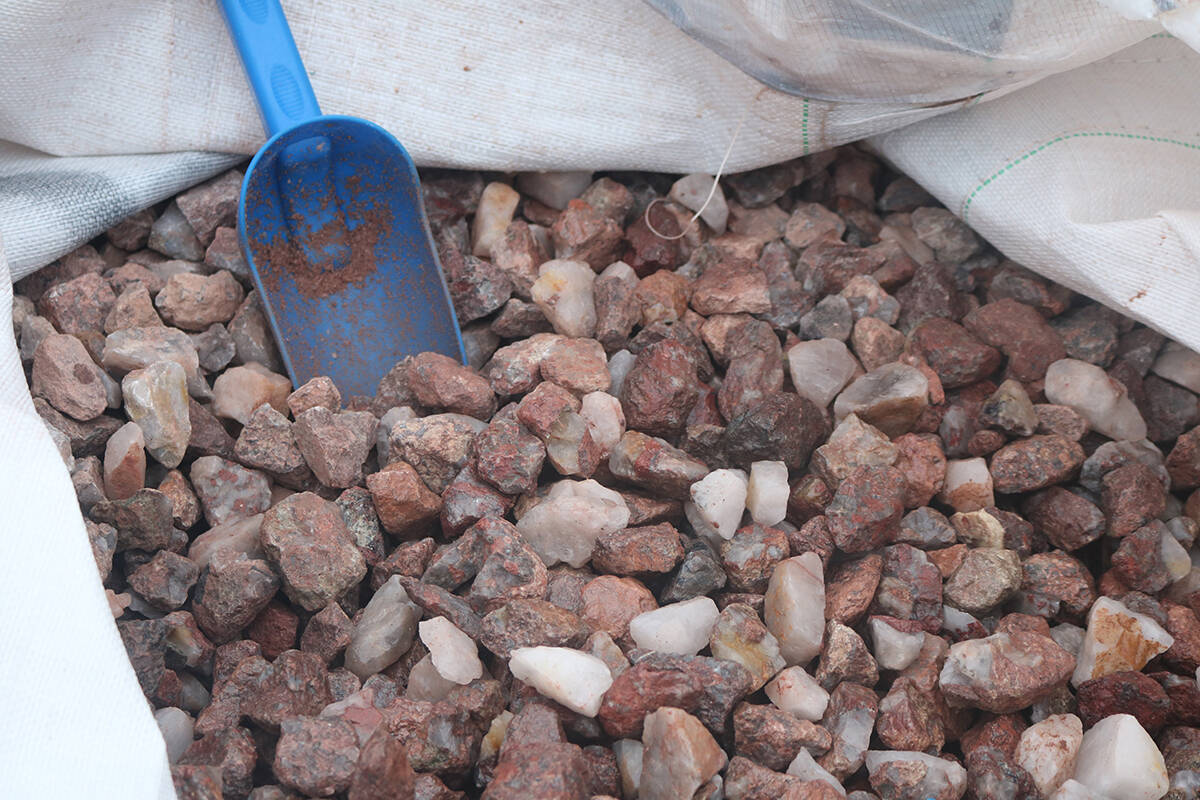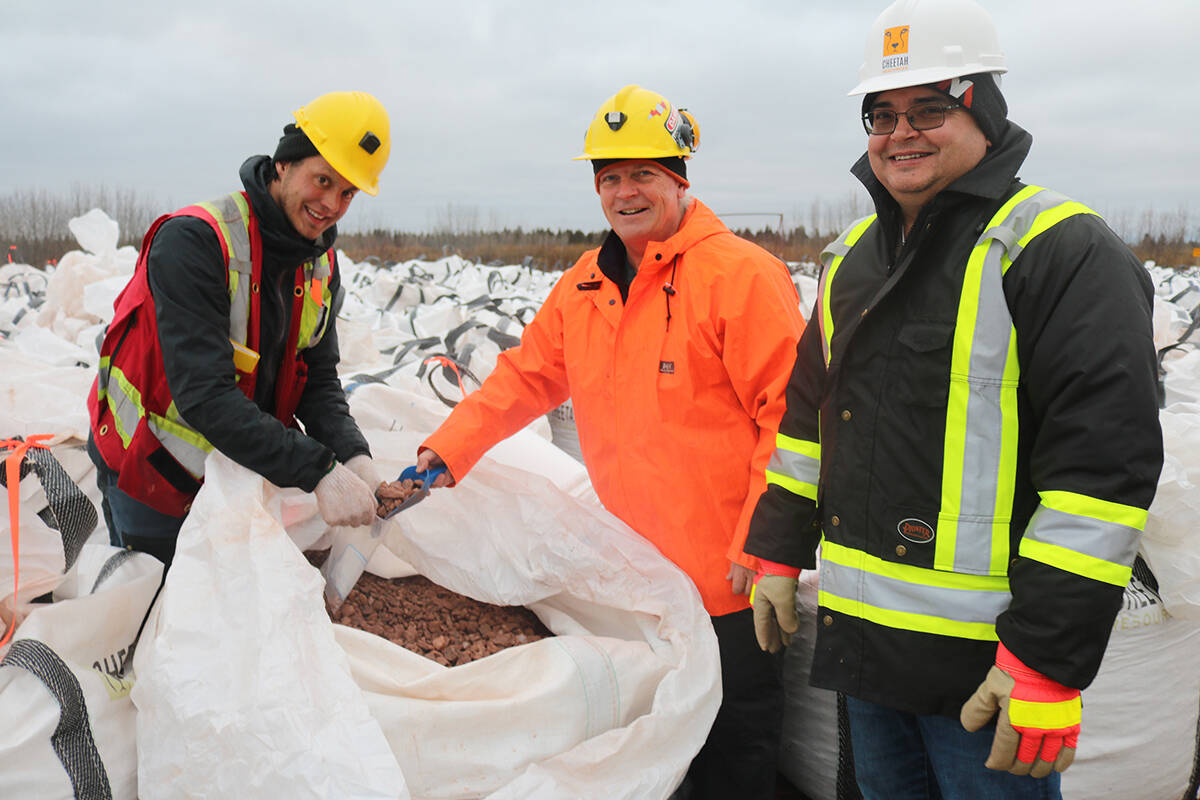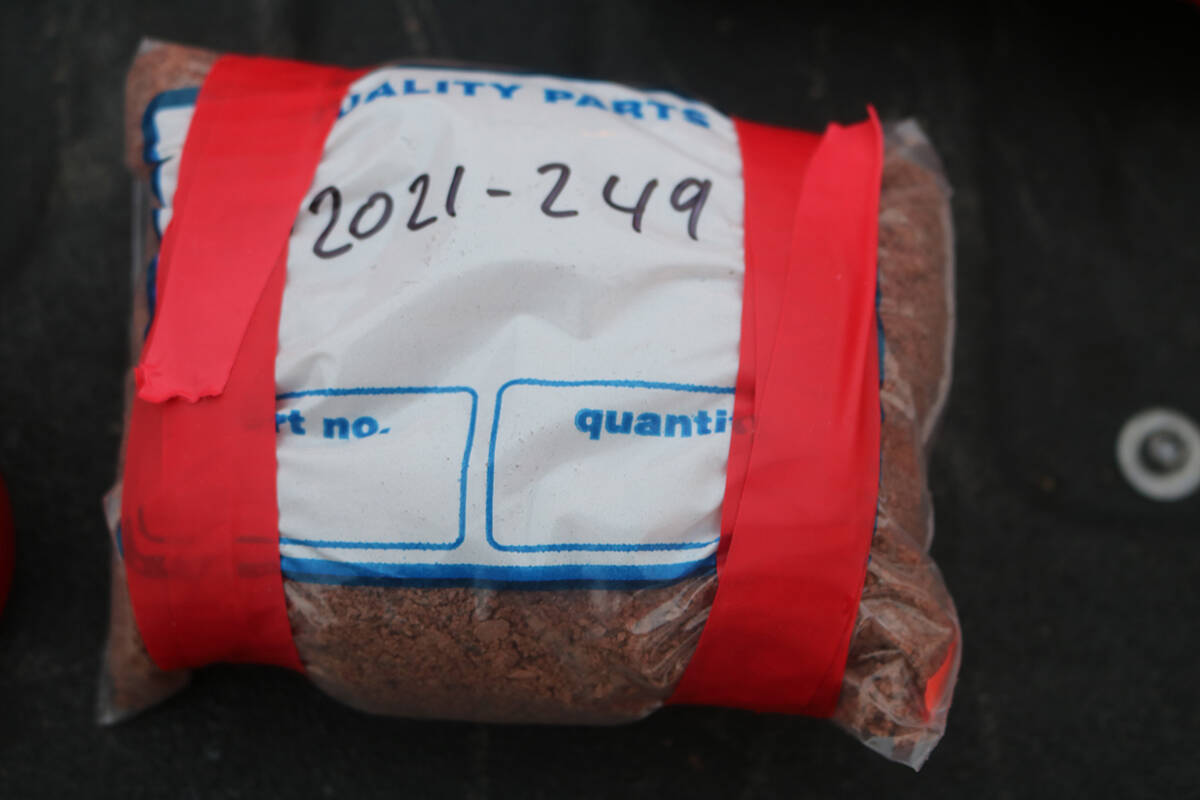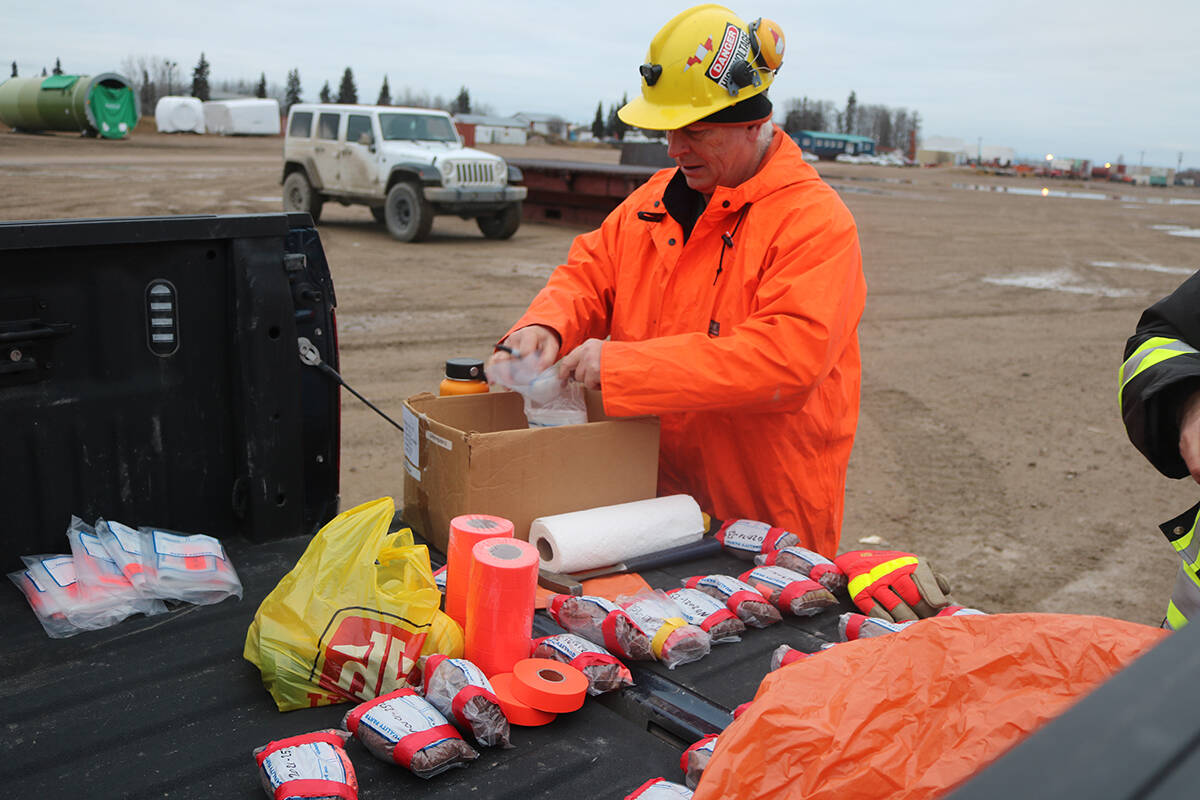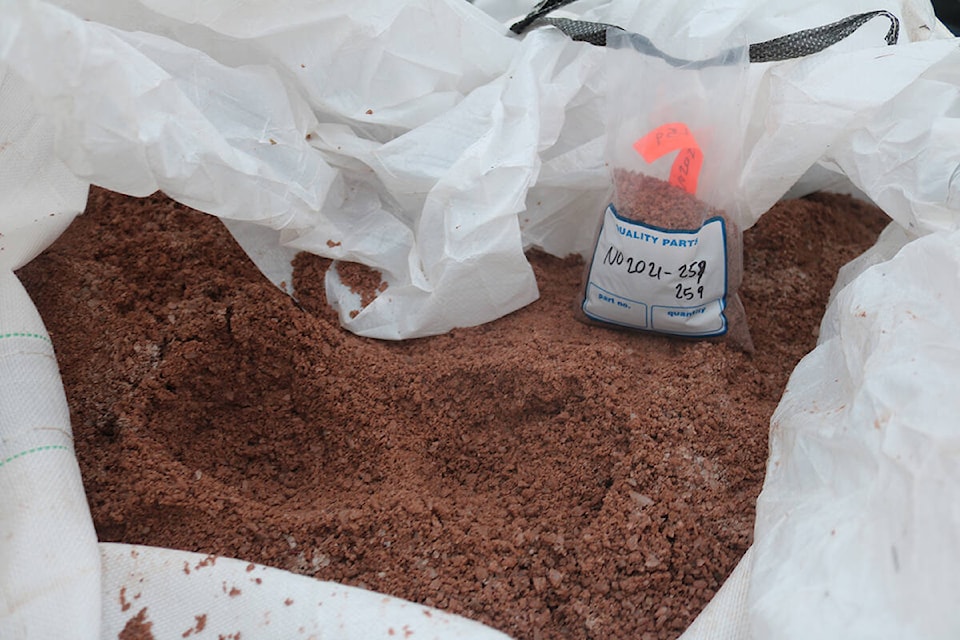The first major step in finding out how much the Government of the Northwest Territories will benefit from the new Nechalacho rare earths mine was completed last week as department officials took mineral samples of 501 bags of the first mined ore.
Hendrik Falck, manager of resource royalty policy oversaw an effort at the Marine Transportation Services (MTS) site in Hay River to open up and examine every single bag - all of which either contained a fine coarse red mineral or a larger, crushed red gravel-like material.
The GNWT Department of Industry, Tourism and Investment is responsible for verifying how much raw, mined material a company ships out of the jurisdiction and finding a contractor to price what it is worth.
“We looked at the bags and the content of the bags and once analyzed we will know how much metal is in each of those bags,” he said. “Using various marketing intelligence firms we can come up with a value of how much we think that material was worth.”
David Connelly, Cheetah’s vice-president of strategy and corporate affairs said last week’s sampling will set a standard for how the quality of product is calculated in the future.
“This will be the first time that they’ve calculated royalties on rare earths and so it is the beginning of the process … which for them is to take the samples to determine the percentage of rare earths in the concentrate,” he said.
“That will be used as a basis for the royalty payments that will be generated from the ongoing mining.”
Connelly said the mine’s operation has been characterized by its ore sorter which has the ability to break down the mined material at different grades and configurations.
“Some ore when it comes out of the ground is very rich and a dark red colour which means it is very high grade,” he said. “Others will be less high grade, not not as bright red and more of a pinkish.”
The bags, weighing about 500 tonnes in total, have been situated at the MTS terminal since the Oct. 16 to 18 weekend but are expected to be shipped by train and truck to Saskatoon over the course of the winter where the product will be further refined and processed.
Falck said his team was thorough in getting a major sample of the raw material as should be expected for a first ever shipment.
“We were able to sample all of the bags that were there,” Falck said. “It was a little bit of an ambitious effort, but with the good luck and good weather that we had, we’re able to get it all done by Thursday evening.”
The Northwest Territories receives its royalties through a severance tax so that the ownership of the minerals can pass from the government to the company.
“The NWT uses the profit-based system where a product will make a certain amount of profit from a mine and the NWT will get a range of royalties from basically zero to 13 per cent depending on how much money the company is making,” he explained.
While Falck and his department have had lots of past experience sampling minerals to see how much in royalties the territory will receive, examining rare earths is a different scenario because the commodity is so uncommon.
“This particular (analysis process) is a bit more complicated than anything else we’ve done because it’s the first time we’re seeing a (rare earths) shipment coming out,” Falck said.
“As a government, and even when we talk to the company, there’s a lot of information that’s still uncertain because this is the first time they’re trying this shipment.
“So we’re learning what is in that material to start with. Once we have a better understanding of what the mine is producing on a regular basis at Thor Lake, over time we would probably just do a quarterly sampling and go out to the mine for a day or so.”
